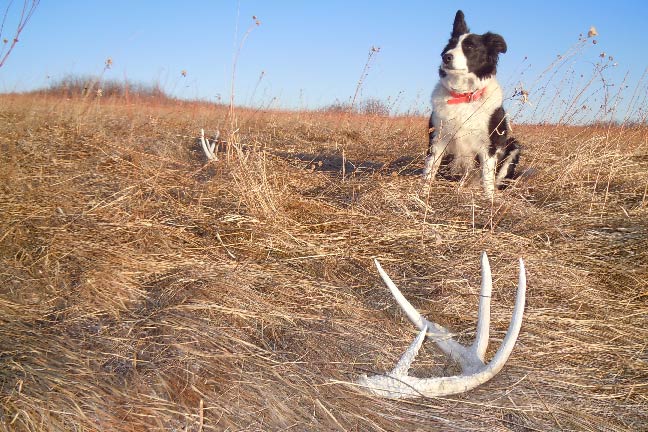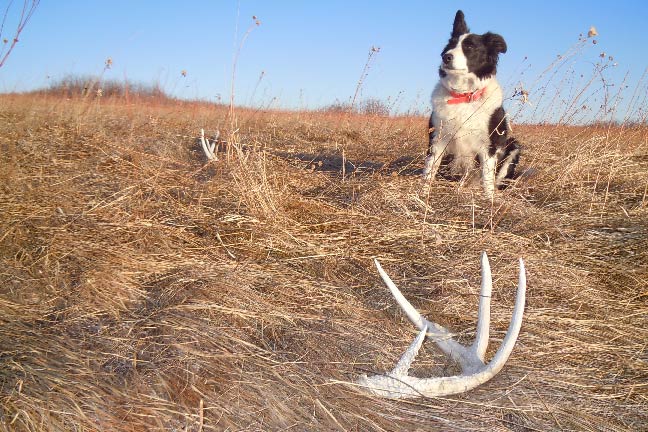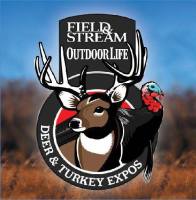You’ve got to be kidding me, I said to myself looking down at the shed antler that suddenly appeared by my foot. Finding a shed antler for me is nothing new as I’ve been a hardcore “horn” addict for more than three decades. Finding a shed antler in my driveway, directly behind our family car and saving it from a guaranteed tire repair; that was a first.

Sometimes you have to go beyond the obvious to find additional shed antlers. If you’ve hunted shed antlers you know the basics. Investigate food sources. Scour bedroom cover. Finally, follow trails in between. If you follow this regimen you’ll end up with a handful of antlers to show for your results. Marking these locations and your finds on a hunting app, like ScoutLook Weather, aids in tracking hot locations.
To add to that spring-end, antler number, begin with the basics and then take it to the next level. Go beyond the obvious. Besides piling up more bone in your pickup bed a step beyond the basics may be required for other reasons. First, a severe winter could force deer to abandon traditional habitat and nutrition. Deep snow nudges deer to more protective digs or to food sources not buried in knee-deep drifts. Even earlier dry weather creating crop failure has the power to move deer to different grounds.
Disturbances also move deer around in the winter and early spring. They may escape just about anywhere. Predators could force deer to flee to a new area and cross odd terrain. Human intrusions, such as firewood cutters, livestock feeding and even recreational cross-country skiers, could bump deer for their own cross-country jaunt.
Lastly, you’ve undoubtedly experienced the added pressure from other shed antler enthusiasts, especially on public lands. Shed antler hunting is as trendy as singles finding singles on Tinder. These invasions and other occurrences mean shed antlers could be just about anywhere. Here are a few less-than-obvious locations you should visit if you have the time and inclination.
Abandoned, But Not Forgotten
Anything abandoned, forgotten and neglected serves as ideal winter refuge for whitetails. Think run-down farmsteads, old quarries, overgrown homestead sites and things that had a human hand, but have become a part of history. These sites generally don’t attract dozens of deer looking for yarding opportunities, but they perform as hideouts for mature deer or deer on the run from intruders.

South-facing walls of buildings, old livestock windbreaks and even hedgerows provide the microenvironments deer need to survive. It pays to even look inside old structures as some deer move in and embrace the weather-free habitat. On numerous occasions I’ve had to shoo deer out of barns I’ve used throughout my lifetime. On one particularly bad winter I kept my horse hay supply in a long, metal machine shed with the door blown off. In January the winter started to build with vengeance…





